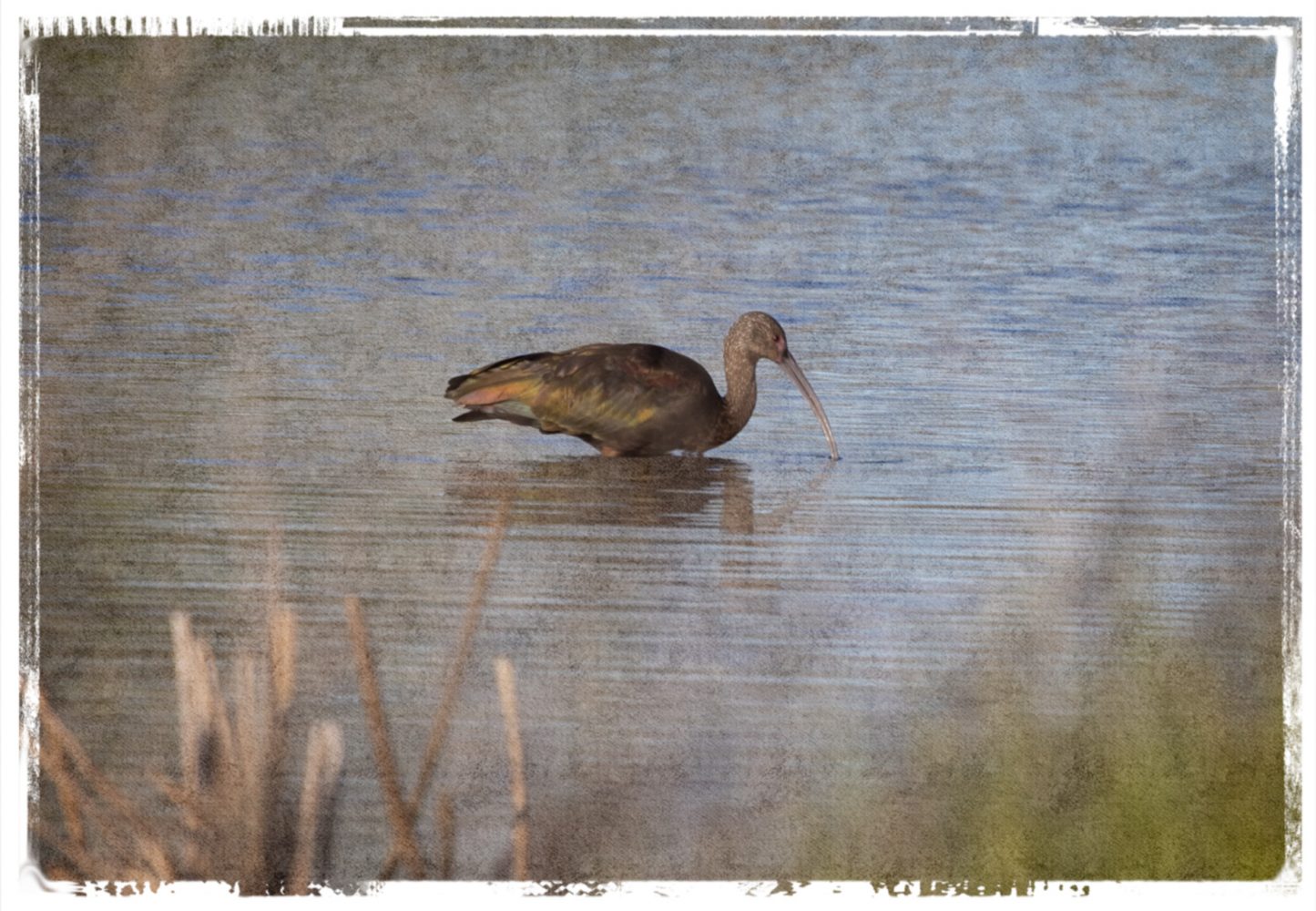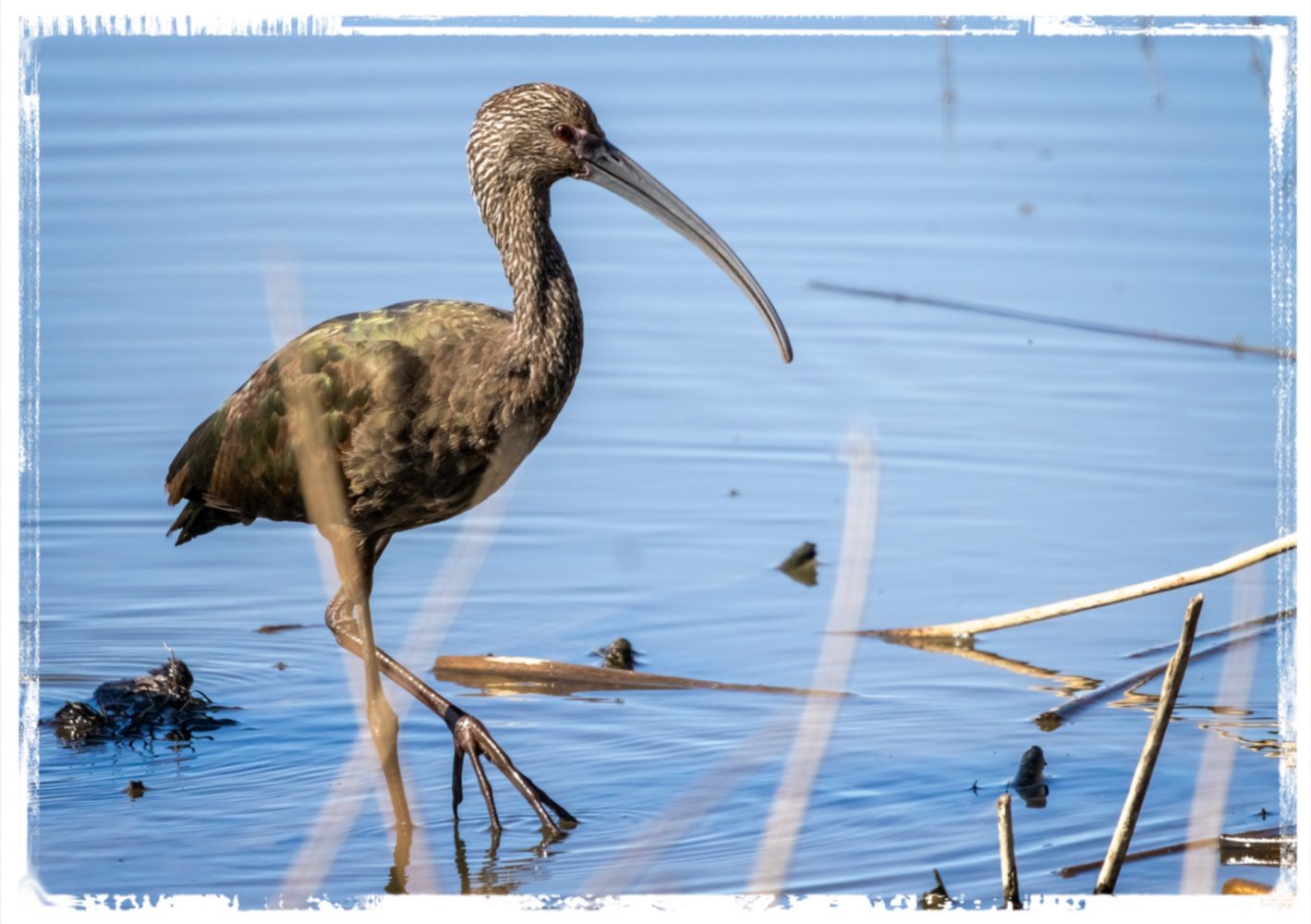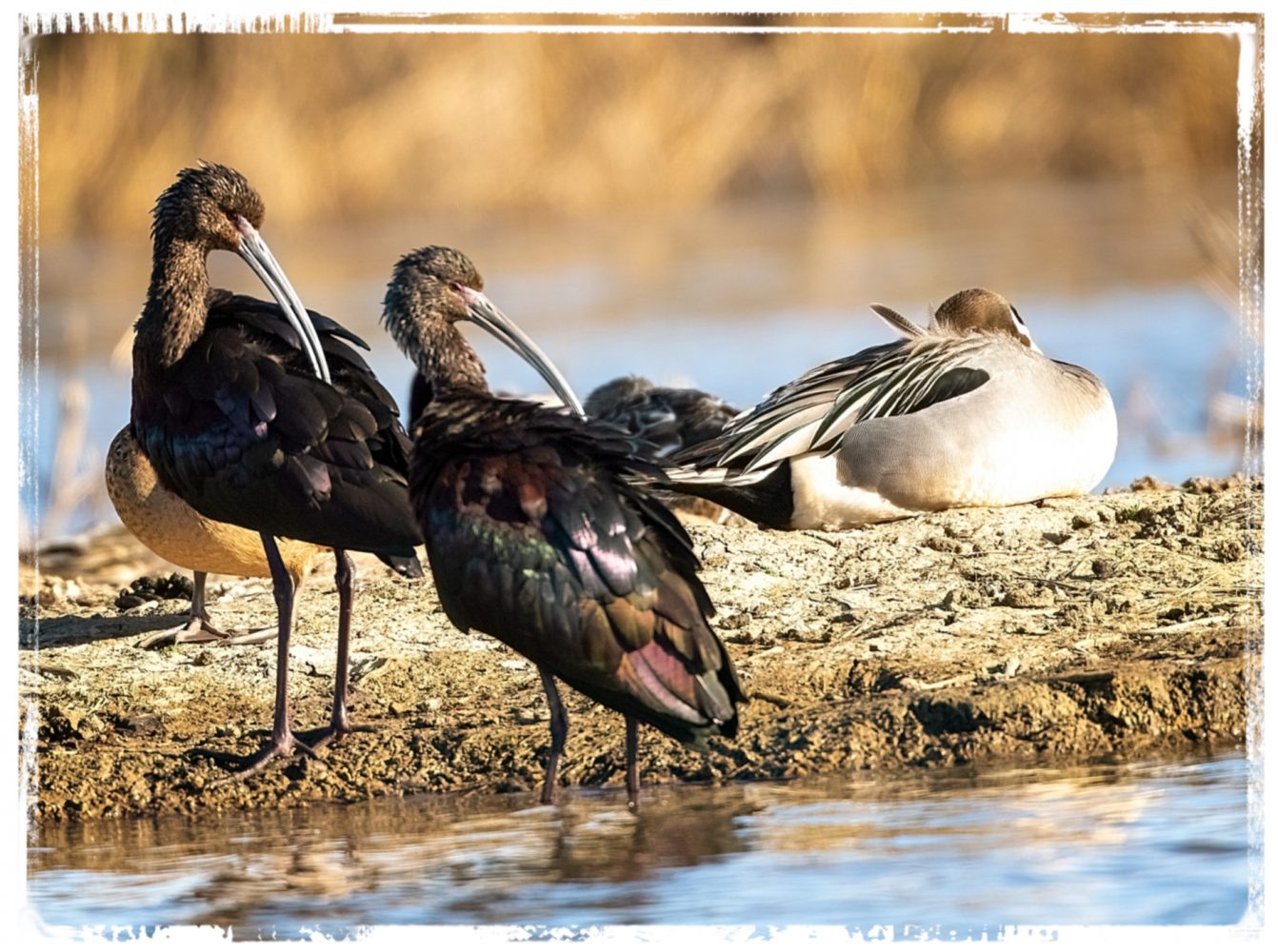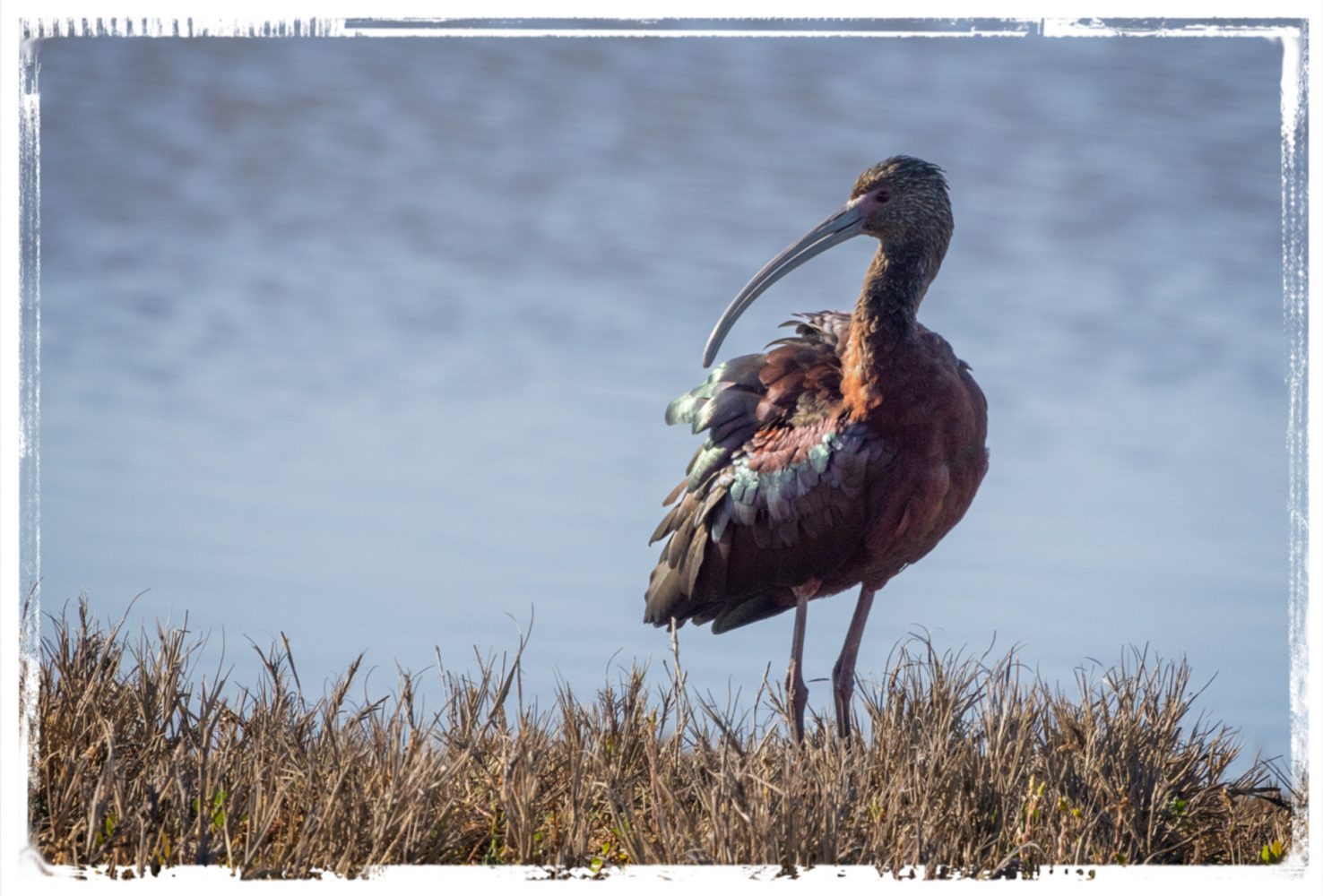Loved seeing all the geese and ducks at the Sacramento and Colusa National Wildlife Refuge, but it was even more special seeing the White-Faced Ibis because we never see them in the Puget Sound area.
Here in the West it’s nearly impossible to confuse the Ibis with any other bird, as they have a distinctive profile, particularly that long, curved beak

When seen through a telephoto lens or binoculars, they appear tall and lanky,

so it always comes as a bit of a shock when you actually see them next to a Northern Pintail because it reminds you of how short they really are.

They’re deceptive in other ways, too. Judging from the first two photos you’d probably think they’re a dull, green color (and they are in winter plumage), but they’re anything but dull when caught in the right light.
Unfortunately, despite a lot of shots, we never got a shot of a glowing, radiant White-Faced Ibis and had to settle for this shot of one with the sun coming from its left.

The photographer in me was definitely disappointed that we couldn’t capture one in better light, but the birder in me was still excited to see them at both refuges.

Let me just say the photo fan in me was quite pleased to see these, especially the last shot, in the grass with the mottled cloudscape background. Formidable beak and a kingly presence! One thing I don’t see is a white face, though, so what’s up with that?
I’m not an expert on this, but I think it’s because they’re not in full breeding colors yet, which might also explain why some of them were just a dull green. Non-breeding adults don’t have a small white area around their beaks.
It’s definitely a matter of luck to catch an ibis in the right light to show their iridescent feathers. I think you did a great job catching that.